UPSC Daily Current Affairs- 25th August 2023 | Current Affairs & Hindu Analysis: Daily, Weekly & Monthly PDF Download
GS-I
Maharaja Bir Bikram Manikya Bahadur
Subject: History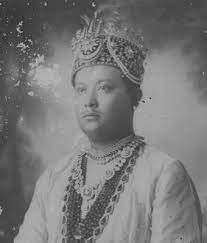
Why in News?
Recently, Prime Minister Narendra Modi paid homage to Maharaja Bir Bikram Manikya Bahadur on his 115th birth anniversary.
About Maharaja Bir Bikram Manikya Bahadur:-
- Birth: August 19, 1908.
- Death: 17 May 1947.
- Dynasty: Maniyaka
- He was the last King of Tripura.
- He was a prominent royal figure who played a pivotal role in the modernization and development of the princely state of Tripura.
- His reign marked a transformative period in Tripura’s history, characterized by progressive reforms and visionary initiatives.
Education:-
- He is popularly known as the Architect of Tripura due to his contribution to educational institutions.
- He established the Maharaja Bir Bikram College (MBB College) in Agartala, Tripura.
Infrastructure:-
- Under his leadership, significant infrastructure projects were undertaken.
- Road networks, bridges, and public buildings were constructed to enhance connectivity and elevate living standards across the state.
- He built Tripura’s first airport at Agartala.
- He also set up one of the country’s first municipalities.
Land Reforms:-
- He initiated land reforms, reserving vast tracks of land for Tripura’s tribal
Healthcare:-
- He established hospitals and medical facilities, ensuring accessible and quality medical services for the people of Tripura.
Administrative Efficiency
- He introduced administrative reforms to enhance governance and efficiency.
- His administration focused on inclusive policies that aimed at the welfare and upliftment of the people.
Cultural Preservation:-
- He supported local arts, crafts, and traditions, ensuring that the state’s identity remained intact. ( Tripura government planning to promote Risa as the signature textile)
Source: AIR
Likaru-Mig La-Fukche road
Subject: Geography
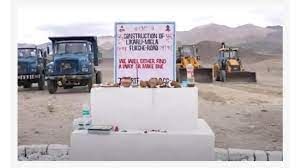
Why in News?
The construction of the world’s new highest motorable Likaru-Mig La-Fukche road began in Ladakh recently.
Background:-
- The Border Roads Organization (BRO) is working on constructing the ‘Likaru-Mig La-Fukche’ road in Ladakh, which will be the new highest motorable road in the world.
About Likaru-Mig La-Fukche road:-
- Location: Ladakh, India.
- It lies close to Hanle in Eastern Ladakh.
- Length:64-km.
- Altitude: about 19,400 feet.
- It is the highest motorable road in the world.
- It will surpass the Umling La Pass.
- Umling La Pass: located at an altitude of 19,300ft, is the highest motorable road in the world currently.
- It will connect Likaru to Fukche, situated 3 km from the Line of Actual Control (LAC).
- LAC: the demarcation that separates Indian-controlled territory from Chinese-controlled territory.
Significance:-
- It would also provide an alternate land connectivity route to the Fukche advanced landing pad.
- It is the first project in India to be carried out entirely by an All Woman Road Construction Company.
- It is led by a five-member All Woman Border Road Task Force.
- With this project, the BRO will break its own record of the highest motorable road.
Source: Hindustan Times
GS-II
BRICS inducts 6 new members to become BRICS Plus
Subject: International Relations
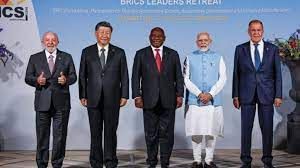
Why in News?
The BRICS alliance, consisting of Brazil, Russia, India, China, and South Africa, has extended invitations to six additional countries, namely Iran, the United Arab Emirates, Saudi Arabia, Argentina, Egypt, and Ethiopia.
- This move aims to bolster the collective voice of the Global South and foster multipolarity in the international arena.
Why discuss this?
- As BRICS broadens its membership, it strengthens its claim to represent nearly half the world’s population and includes key oil-producing nations.
- However, concerns also arise regarding China’s increasing influence within the alliance.
BRICS Plus: Emerging Role
- Heft and Influence: The inclusion of new members enhances BRICS’s position as a spokesperson for the developing world. The alliance currently represents 40% of the global population and over a quarter of the world’s GDP. With the addition of new members, it will encompass almost half the world’s population and include major oil-producing nations.
- Global Solidarity: BRICS’s growth is driven by anti-US sentiment and a desire for multipolarity among countries in the Global South. It serves as a platform where nations can express solidarity and challenge Western-dominated narratives.
BRICS: Evolution and Geopolitical Context
- Emergence of BRICS: Established in 2009, BRICS initially comprised Brazil, Russia, India, and China, with South Africa joining in 2011. The alliance aimed to showcase the economic potential of these emerging markets.
- Challenges and Opportunities: While BRICS’s economic performance has varied, geopolitical shifts like the Ukraine conflict have propelled it into a bloc with the potential to challenge Western influence and provide an alternative viewpoint.
Dynamics of New BRICS Members
- Unanimous Decisions: BRICS decisions require unanimous agreement from all members. While Russia and China face geopolitical challenges with the West, Brazil, South Africa, and India maintain significant partnerships with the US and Europe.
- China’s Role: China is driving BRICS’s expansion, making membership expansion a core agenda item.
- Inclusion of Iran: China and Russia’s influence is evident in the inclusion of Iran, highlighting their collaboration. This move brings together regional rivals Saudi Arabia and Iran within the same alliance, reflecting China’s mediation efforts.
- Saudi Arabia’s Shift: Saudi Arabia’s inclusion marks its pursuit of a more independent foreign policy, diverging from its traditional US alliance.
- Global Significance for Iran and Russia: For Iran and Russia, BRICS membership signifies their global partnerships and challenges to Western dominance.
Implications for India
- Balancing Act: India’s participation in the G7 summit and Quad summit reflects its multifaceted foreign policy approach. While engaging with Western alliances, India also places importance on its “anti-Western” stance within BRICS.
- BRICS as a Non-Western Bloc: India views BRICS as a “non-Western” group and strives to maintain its independent voice within the alliance.
- Concerns for India: Amid expansion, there are concerns that BRICS could tilt more toward China, potentially side-lining India’s interests.
Conclusion
- BRICS’s expansion signifies a step toward global multipolarity, providing a platform for diverse countries to unite against Western-centric narratives.
- As the alliance grows, it gains greater representation and influence, strengthening the collective voice of the Global South.
- However, with China’s increased influence, there are also legitimate concerns about the balance of power within BRICS and its impact on individual member states.
Source: The Hindu
The real purpose of the medical college
Subject: Governance

Why in News?
In Kerala, a case of medical negligence involving a forgotten surgical instrument inside a patient and increasing vacancies in dental courses across the nation’s colleges spotlight the efficacy and responsibilities of medical institutions in India’s healthcare system.
Central idea
- The rising incidents of medical negligence in leading Indian medical colleges and the Union Government’s 2019 Policy Proposal, which aims to convert district hospitals into medical colleges and establish AIIMS-like institutions in every state, prompt a revaluation of medical colleges’ contribution to patient care from a public health perspective.
The government’s proposal
- Conversion of District Hospitals: The government aims to convert district hospitals across the country into medical colleges. District hospitals are typically considered to be at a secondary level of healthcare, and this policy suggests upgrading them to medical colleges, which are institutions for medical education and training.
- Establishment of AIIMS-like Institutions: The government also intends to establish institutions similar to the AIIMS in every state. AIIMS is renowned for providing advanced healthcare services, medical education, and research. The objective is to replicate AIIMS-like facilities in each state to enhance medical infrastructure and education.
Purpose of a medical college
- Educational Role:
- The foremost purpose of a medical college is to provide education and training to students aspiring to become medical professionals.
- This involves imparting the theoretical knowledge, practical skills, and clinical experiences necessary for students to become competent healthcare practitioners.
- Medical Care:
- A secondary purpose of a medical college is to offer medical care. This is facilitated through the associated medical college hospital, which is equipped with state-of-the-art facilities.
- The hospital serves as a platform for the practical training and apprenticeship (internship) of medical students.
- It provides bedside care, an essential requirement for medical training, and contributes to the development of clinical skills.
Myths related to medical colleges
- Myth of Comprehensive Healthcare: There’s a misconception that having a medical college in a district can address all healthcare needs, which can lead to an overestimation of the capabilities of medical colleges.
- Myth of Increased Medical Seats: Establishing a medical college is often associated with the belief that it will increase the availability of medical seats for local students, creating a false hope for aspiring medical professionals.
- Myth of Quantity Over Quality: There’s a misconception that producing more medical professionals will automatically resolve issues related to inadequate healthcare access, overlooking the importance of quality healthcare provision.
- The Myth of Tertiary Care Solving All Issues: The belief that tertiary care services offered by medical colleges can cater to all healthcare needs may undermine the significance of strengthening primary and secondary care services.
- The Myth of Medical Colleges as Ideal Solutions: The notion that medical colleges are the ultimate solution to healthcare challenges might oversimplify the complexities of healthcare delivery, particularly in areas where secondary-level care can have a significant impact.
Challenges faced by medical colleges in healthcare delivery
- Patient Overload: Higher-level medical facilities, including medical colleges, experience a heavy influx of patients seeking primary and secondary care, leading to patient overcrowding.
- Mismanagement of Cases: A significant majority (over 80%) of cases treated in medical colleges are inappropriate for specialized tertiary care, suggesting a mismatch between patient needs and provided services.
- Deficient Referral System: The absence of an effective referral system in India’s healthcare setup results in patients needing primary and secondary care seeking treatment at medical colleges, causing strain.
- Resource Constraints: The varied patient influx, spanning primary to advanced cases, overburdens the resources and infrastructure of medical colleges, potentially affecting care quality.
Examining tertiary care needs and challenges in district healthcare
- It’s a well-established fact that approximately 1% of the total population annually requires advanced tertiary care.
- For instance, in a district with a population of three million, this translates to a demand for 575-700 specialized beds (considering 100%-85% bed occupancy).Most district hospitals are intended to address this specialized tertiary care need.
- However, the challenge arises as district hospitals, expected to operate and follow referral systems from lower-level facilities, face obstacles due to deficient infrastructure, a shortage of specialists, and a lack of referral systems. These issues are exacerbated by the non-functionality of secondary-level care facilities.
Way forward
- Redefine Priorities: Rather than assuming that medical colleges alone can address the diverse healthcare needs of a population, a shift in perspective is required. The primary focus should be on strengthening secondary-care facilities, particularly district hospitals, which can cater to a wider spectrum of curative care requirements.
- Enhance Referral Systems: Implementing and reinforcing efficient referral systems from primary healthcare centers to well-equipped district hospitals can help streamline patient care.
- Balance Educational and Practical Needs: While medical education remains crucial, a stronger emphasis on hands-on training within well-functioning hospitals is essential.
- Strategic Resource Allocation: When contemplating new medical college establishments, a strategic approach is vital. Focus resources on areas with existing infrastructure, connectivity, and clinical facilities to ensure the institution’s viability and effectiveness.
- Community Education and Awareness: To manage expectations and dispel myths, community engagement is paramount. Educate the public about the specific roles and capabilities of medical colleges, preventing false perceptions of comprehensive healthcare solutions.
- Tailored Regional Approaches: Recognize that diverse regions have distinct challenges. Tailor the establishment and operation of medical colleges to local needs, acknowledging that a standardized approach may not effectively address unique community requirements.
- Elevate District Hospitals: District hospitals should receive substantial support, including infrastructure upgrades, specialist staffing, advanced equipment, and improved connectivity. These efforts will bolster secondary-care facilities, reducing the load on higher-level medical institutions.
Conclusion
- The solution lies in dismantling myths and embracing pragmatic strategies. A reimagined healthcare system built upon patient-focused principles will not only fulfill the curative care needs of the populace but also redefine the role of medical colleges as beacons of comprehensive healthcare.
Source: The Hindu
Line of Actual Control (LAC): India-China plans to de-escalate in eastern Ladakh
Subject: International Relations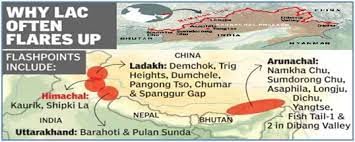
Why in News?
The Indian PM and Chinese President agreed on the sidelines of the 15th BRICS Summit to intensify efforts for expeditious disengagement and de-escalation along the LAC in eastern Ladakh.
- With this, the spotlight is now on the exact contours of plans being drawn up by military commanders on the ground to pull back troops.
What is the Line of Actual Control (LAC)?
- The LAC is the demarcation that separates Indian-controlled territory from Chinese-controlled territory.
- It is divided into three sectors: the eastern sector which spans Arunachal Pradesh and Sikkim, the middle sector in Uttarakhand and Himachal Pradesh, and the western sector in Ladakh.
- India considers the LAC to be 3,488 km long, while the Chinese consider it to be only around 2,000 km.
- India’s claim line is the line seen in the official boundary marked on the maps as released by the Survey of India, including both Aksai Chin and Gilgit-Baltistan. This means LAC is not the claim line for India.
- In China’s case, LAC is the claim line except in the eastern sector, where it claims the entire Arunachal Pradesh as South Tibet.
LAC vs Line of Control (LoC) with Pakistan:
- The LoC emerged from the 1948 ceasefire line negotiated by the UN after the Kashmir War.
- It was designated as the LoC in 1972, following the Shimla Agreement between the two countries (India and Pakistan).
- It is delineated on a map signed by DGMOs of both armies and has the international sanctity of a legal agreement.
- On the other hand, the LAC is only a concept. It is not agreed upon by the two countries, neither delineated on a map or demarcated on the ground.
Disagreement over the LAC:
- The major disagreements are in the western sector where the LAC emerged from two letters written by Chinese PM Zhou Enlai to PM Jawaharlal Nehru in 1959, after he had first mentioned such a ‘line’ in 1956.
- After the 1962 War, the Chinese claimed they had withdrawn to 20 km behind the LAC of 1959, which coincides with the so-called McMahon Line in the eastern sector.
- India’s Response to China’s Designation of the LAC:
- India rejected the concept of LAC in both 1959 and 1962, as it is the line China has created.
- The Chinese line was a disconnected series of points on a map that could be joined up in many ways.
- The line should omit gains from aggression in 1962 and therefore should be based on the actual position on September 8, 1962 before the Chinese attack.
- This vagueness of the Chinese definition left it open for China to continue its creeping attempt to change facts on the ground by military force.
- During the Doklam crisis in 2017, the Chinese Foreign Ministry spokesperson urged India to abide by the “1959 LAC”.
Why are these Claim Lines Controversial in Ladakh?
- Aksai Chin in Ladakh province of the princely state of J&K was not part of British India, although it was a part of the British Empire.
- Thus, the eastern boundary was well defined in 1914 (when the Shimla Agreement on the McMahon Line was signed by British India) but in the west in Ladakh, it was not.
Current Arrangement to Reconcile Differences over LAC:
- India formally accepted the concept of the LAC when the Indian PM paid a return visit to Beijing in 1993 (after Chinese Premier Li Peng’s 1991 visit to India).
- The two sides signed the Agreement to Maintain Peace and Tranquility at the LAC.
- The reference to the LAC was unable to make it clear that it was referring to the LAC at the time the agreement was signed, not the LAC of 1959 or 1962.
- To reconcile the differences about some areas, the two countries agreed that the Joint Working Group on the border issue would take up the task of clarifying the alignment of the LAC.
The Plans for Expeditious De-escalation along the LAC in Eastern Ladakh:
- The extent of disengagement and where on the LAC it will take place is not immediately clear.
- However, various modalities have been prepared for possible limited disengagement in phases.
- For example, since 2020, Corps Commanders of India and China have been discussing resolution of the flashpoints along the LAC.
- The talks led to some forward movement with both sides deciding to pull back troops and dismantle temporary structures from the Galwan Valley.
- Disengagement in most of these areas led to the creation of buffer zones - this stops troops of both sides from accessing areas which they patrolled earlier.
Legacy Issues that Need to be Resolved:
- Other than these friction points, the legacy issues of Depsang Plains and Demchok - which predate the 2020 incursions by the Chinese PLA - continue to fester.
- The Depsang Plains are located close to the strategically important Daulat Beg Oldie. The Depsang Plains issue began in 2013 when China carried out an 18-km incursion in the area.
- Despite the two countries agreeing then to go back from their positions, the PLA troops did not vacate the area completely.
- In Demchok, which is in the southern part of eastern Ladakh, the problem is mainly at the ChardingNinglung Nullah (CNN) junction.
- In multiple instances, the PLA also stopped Indian graziers at the Saddle Pass at the CNN junction, well within India’s perception of the LAC.
Source: The Hindu
GS-III
India and the Northern Sea Route
Subject: Economy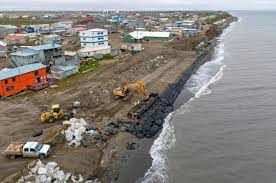
Why in News?
Murmansk, the gateway to the Arctic and the starting point of the Northern Sea Route (NSR), is witnessing a growing Indian presence in cargo traffic.
Why discuss this?
- India accounts for 35% of the cargo handled by the Murmansk port in the first seven months of 2023.
- This surge in Indian engagement in the Arctic holds significant implications for India’s economic and water security.
About Northern Sea Route
- The Northern Sea Route (NSR) is a maritime shipping route that runs along the northern coast of Russia, connecting the Atlantic Ocean to the Pacific Ocean.
- It traverses the Arctic Ocean and Siberian coastline, providing a shorter route between Europe and Asia compared to the traditional routes through the Suez Canal or the Panama Canal.
- NSR stretches from the Barents Sea, near the Arctic archipelago of Novaya Zemlya, to the Bering Strait, separating Russia from Alaska
Significance of the Arctic for India
- Climate Impact: The Arctic’s susceptibility to climate change holds potential consequences for India, impacting economic and water security.
- Resource Prospects: The Arctic region harbors substantial untapped hydrocarbon reserves, including oil, gas, coal, zinc, and silver, making it an enticing prospect for India’s energy needs.
- Sustainable Approach: India’s Arctic Policy of 2022 underscores adherence to UN Sustainable Development Goals in the region’s economic development.
India’s Arctic Journey
- Historical Engagement: India’s connection with the Arctic dates back to the signing of the Svalbard Treaty in 1920.
- Scientific Endeavors: India has undertaken various scientific studies and research initiatives in the Arctic, including atmospheric, marine, and glaciological studies.
- Observations and Research: Notably, India’s research station “Himadri” in Ny-Alesund and its multi-sensor moored observatory and atmospheric laboratory demonstrate its commitment to Arctic research.
Reviving the NSR
- NSR Overview: The NSR is the shortest shipping route connecting Europe and Asia-Pacific countries, traversing the Arctic Ocean.
- Distance Advantage: The NSR boasts potential distance savings of up to 50% compared to traditional routes via Suez or Panama, gaining prominence after the 2021 Suez Canal blockage.
- Russia’s Role: Russia, equipped with a nuclear-powered icebreaker fleet, ensures safe navigation by breaking ice along the NSR.
Drivers for India’s NSR Engagement
- Cargo Traffic Growth: India’s involvement is fueled by the consistent rise in cargo traffic along the NSR, coupled with a 73% growth rate between 2018-2022.
- Energy Imports: As India increasingly imports energy resources from Russia, the NSR offers a reliable and secure transportation avenue.
- Strategic Transit: The Chennai-Vladivostok Maritime Corridor (CVMC) project aligns with India’s geographical position, enabling efficient transit routes and shorter transport times.
Future Outlook and Collaborations
- NSR Development Plan: Russia’s ambitious NSR development plan aims for significant cargo traffic growth, with targets of 80 million and 150 million tonnes for 2024 and 2030 respectively.
- Russian-Indian Collaboration: A Russian delegation engaging with Indian businesses in 2023 showcased Russia’s commitment to enabling the year-round operation of the NSR.
- CVMC Project: The Chennai-Vladivostok Maritime Corridor project holds promise for enhancing trade between India and Russia, potentially transforming transport dynamics.
Conclusion
- India’s burgeoning involvement in the Arctic, underscored by its significant role in the Northern Sea Route’s cargo traffic, exemplifies its strategic pursuit of diversified energy resources and enhanced trade corridors.
- As India forges partnerships with Russia and navigates the challenges of a changing Arctic landscape, it’s poised to play a pivotal role in shaping the future of Arctic trade and sustainable development.
Source: The Hindu
Brain-computer interface device
Subject: Science and Technology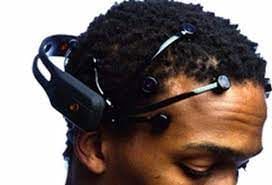
Why in News?
Scientists have developed a device that can translate paralysed people's brain signals into words at faster speeds than before.
About Brain-computer interface device:
- This device is capable of decoding brain activity into speech faster, more accurately and covering larger vocabulary than existing technologies.
- People with neurological disorders, including brainstem stroke or amyotrophic lateral sclerosis, often face speech loss due to paralysis of muscles.
- Previous studies have shown that it is possible to decode speech from the brain activities of a person with paralysis, but only in the form of text and with limited speed, accuracy and vocabulary.
- Researchers demonstrated a BCI that collects the neural activity of single cells with an array of fine electrodes inserted into the brain and trained an artificial neural network to decode intended vocalisations.
- With the help of the device, a patient with amyotrophic lateral sclerosis was able to communicate at an average rate of 62 words per minute, which is 3.4 times.
- This BCI decodes brain signals to generate three outputs simultaneously: text, audible speech and a speaking avatar.
What is amyotrophic lateral sclerosis?
- It is a neurodegenerative disease in which special nerve cells called motor neurons in the brain and spine, which control an individual’s voluntary functions like walking, chewing, talking, and moving their arms- are affected.
- It’s also known as Lou Gehrig’s disease.
- As these nerve cells progressively die, the muscles dependent on them are unable to function or move, due to which they begin to atrophy or waste away.
Source: The Indian Express
|
52 videos|5374 docs|1136 tests
|





















